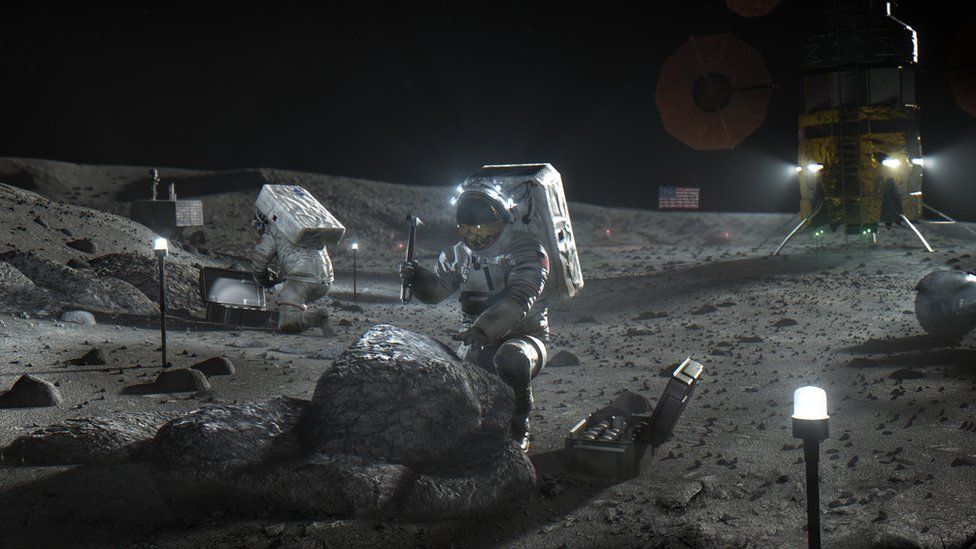Our own pioneers came from lands that had been DEEPLY developed. The English of the “original Pilgrims” came from places around London – at the time one of the most developed places on Earth. “Colonists bound for the American continent came from various European cities, with prominent groups originating from cities in England, France, Spain, the Netherlands, and Germany. These included major ports like London for English settlers, Paris for French colonists, and Seville for Spanish expeditions, as well as smaller towns and regional centers that provided settlers for specific colonial efforts, like German towns for settlements in Pennsylvania and Virginia.”
That was just in the part of North American colonization that we are most familiar with.
Already on the continent were colonists from the “…North Asian Mammoth steppe via the Beringia land bridge, which had formed between northeastern Siberia and western Alaska due to the lowering of sea level during the Last Glacial Maximum (26,000 to 19,000 years ago). These populations expanded south of the Laurentide Ice Sheet, either by sea or land, and spread rapidly southward, occupying both North and South America no later than 14,000 years ago, and possibly before 20,000 years ago. The earliest populations in the Americas, before roughly 10,000 years ago, are known as Paleo-Indians. Indigenous peoples of the Americas have been linked to Siberian populations by proposed linguistic factors, the distribution of blood types, and in genetic composition as reflected by molecular data, such as DNA.”
So, the fact of the matter is that NO ONE ON THE NORTH OR SOUTH AMERICAN CONTINENTS are actually…you know, native to the continent.
At any rate, it will be a guarantee that NO ONE who settles on the asteroids will be “from there”; though I can imagine arguments a few tens-of-thousands-of-years-from-now about who are “native asteroidians” and who are the “invader asteroidians”…but that’s a subject for a science fiction story someday…
For now, we can make an assumption: the first asteroidian colonists will be lots of single people of all genders, colors, orientations, and types. NONE of them will want to bring their children into space on barely developed worldlets, in fact, barely more than rocks hurtling through space – though some of the LARGEST will be fairly substantial. THE largest one we currently know of is, of course Ceres, whose diameter is roughly the distance from my home to Winnipeg or Thunder Bay, Ontario.
So, let’s take a smaller asteroid – someday Ceres might be the Capital of Asteroid Nation, but for now, we’ll be aiming at smaller asteroids that will be simpler to mine and to “colonize”. Assuming you start off with a “colony” of miners whose jobs will be dangerous (ie, deadly) at first while they “figure things out”. (Mining will NOT be like it is in Northern Minnesota on The Iron Range (aka “Da Raynch”) – where strip mining is now the norm (though, what is “the norm” today is NOT what it was at the height of the Iron Rush roughly seven decades from 1895 to 1962. It’s far smaller. BUT: that Rush saw the establishment of dozens and dozens of cities, towns, and suburbs.
But the original settlers were company workers: aka “men”…as mining was considered too “dangerous and difficult” for women. There were, however pioneers! “In 1943, while attending beauty school in Chicago, Mildred ‘Mickey’ Jansson’s father ‘petitioned’ her return to Hibbing. So, at age 20, she headed back home to work the jobs vacated by the young men serving in World War II. She and a young woman named Virginia Gordon became the ‘first and second hire by Mr. Henry ‘Hank’ Hughes’ at the Butler Brothers mining company near Mickey’s hometown. The women did a variety of labor. They loaded ore cars, repaired gas shovels, drove trucks. She served as a ‘guinea pig’ of sorts by “pre-testing” many of the jobs at the mine—proving them suitable for women—before subsequent females were allowed to take on the tasks.”
Fascinating, eh? So, what does the future hold for the colonization of space via asteroid mining? I’ll be looking at it more in future posts! (Next Time? "The Old Family Asteroid!" Hmmm...)
Today’s Source: https://explorersweb.com/asteroids-into-space-stations/ , https://en.wikipedia.org/wiki/Timeline_of_the_European_colonization_of_North_America , https://en.wikipedia.org/wiki/Peopling_of_the_Americas#:~:text=It%20is%20believed%20that%20the,level%20during%20the%20Last%20Glacial , https://en.wikipedia.org/wiki/List_of_exceptional_asteroids , https://www.mesabitribune.com/mine/the-ranges-first-female-miner-paved-the-way/article_81696fda-0972-11ee-9707-af79cb86d809.html PIGS IN SPACE: https://www.youtube.com/watch?v=PHHN34emJsY
Foundational Resource: (A general Wikipedia post detailing what the authors currently know about asteroid mining: https://en.wikipedia.org/wiki/Asteroid_mining)
Noted Resources: https://en.wikipedia.org/wiki/List_of_asteroid_close_approaches_to_Earth, https://www.pharostribune.com/news/local_news/article_7fcd3ea5-3c14-533f-a8d5-9bf629922f34.html, https://www.fool.com/investing/2022/04/29/like-asteroid-mining-be-careful-what-you-wish-for/, https://www.nps.gov/wrbr/learn/historyculture/theroadtothefirstflight.htm, https://hackaday.com/2019/03/27/extraterrestrial-excavation-digging-holes-on-other-worlds/, https://www.planetary.org/space-missions/every-small-worlds-mission
Interesting Stuff The Might Apply To Mining Asteroids: https://www.bbc.com/news/articles/cgej7gzg8l0o
Fascinating, eh? So, what does the future hold for the colonization of space via asteroid mining? I’ll be looking at it more in future posts! (Next Time? "The Old Family Asteroid!" Hmmm...)
Today’s Source: https://explorersweb.com/asteroids-into-space-stations/ , https://en.wikipedia.org/wiki/Timeline_of_the_European_colonization_of_North_America , https://en.wikipedia.org/wiki/Peopling_of_the_Americas#:~:text=It%20is%20believed%20that%20the,level%20during%20the%20Last%20Glacial , https://en.wikipedia.org/wiki/List_of_exceptional_asteroids , https://www.mesabitribune.com/mine/the-ranges-first-female-miner-paved-the-way/article_81696fda-0972-11ee-9707-af79cb86d809.html PIGS IN SPACE: https://www.youtube.com/watch?v=PHHN34emJsY
Foundational Resource: (A general Wikipedia post detailing what the authors currently know about asteroid mining: https://en.wikipedia.org/wiki/Asteroid_mining)
Noted Resources: https://en.wikipedia.org/wiki/List_of_asteroid_close_approaches_to_Earth, https://www.pharostribune.com/news/local_news/article_7fcd3ea5-3c14-533f-a8d5-9bf629922f34.html, https://www.fool.com/investing/2022/04/29/like-asteroid-mining-be-careful-what-you-wish-for/, https://www.nps.gov/wrbr/learn/historyculture/theroadtothefirstflight.htm, https://hackaday.com/2019/03/27/extraterrestrial-excavation-digging-holes-on-other-worlds/, https://www.planetary.org/space-missions/every-small-worlds-mission
Interesting Stuff The Might Apply To Mining Asteroids: https://www.bbc.com/news/articles/cgej7gzg8l0o


No comments:
Post a Comment